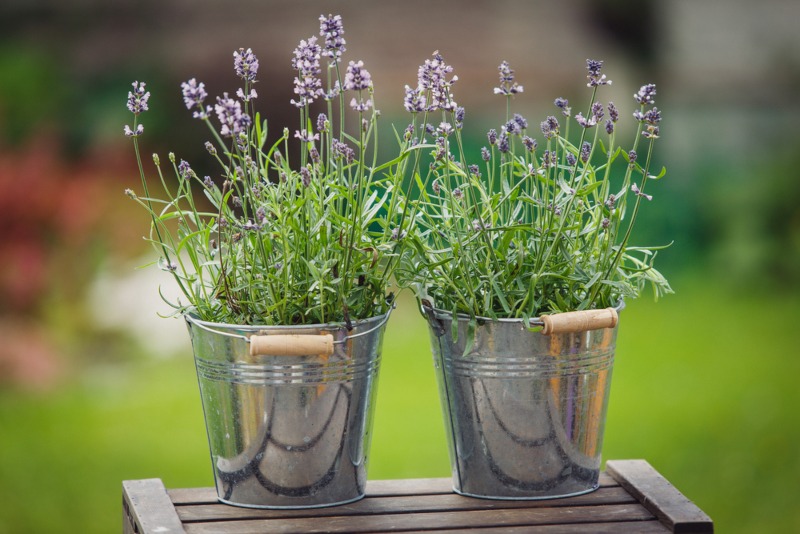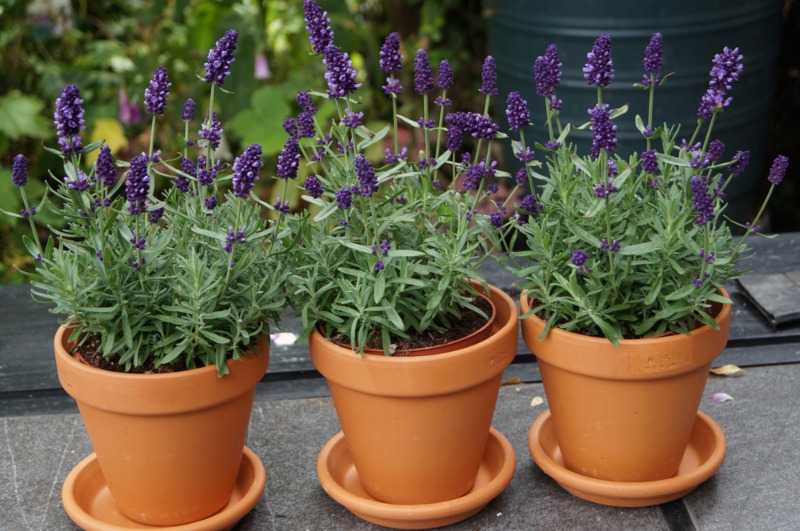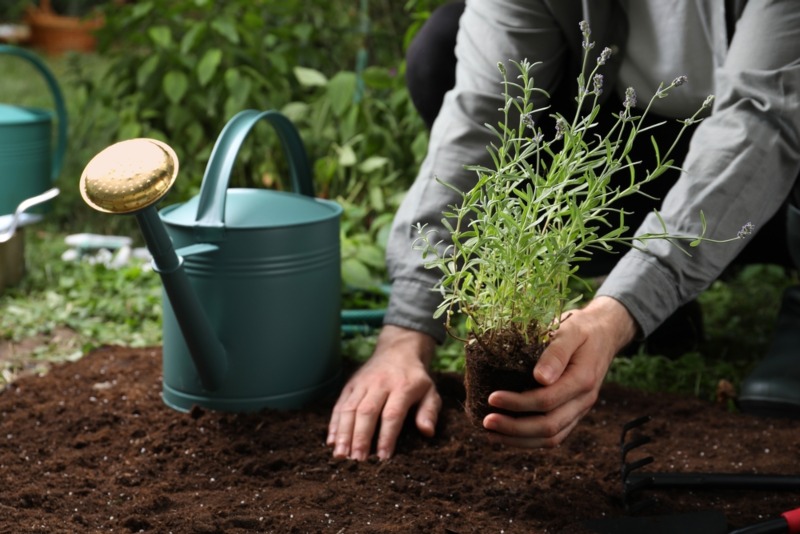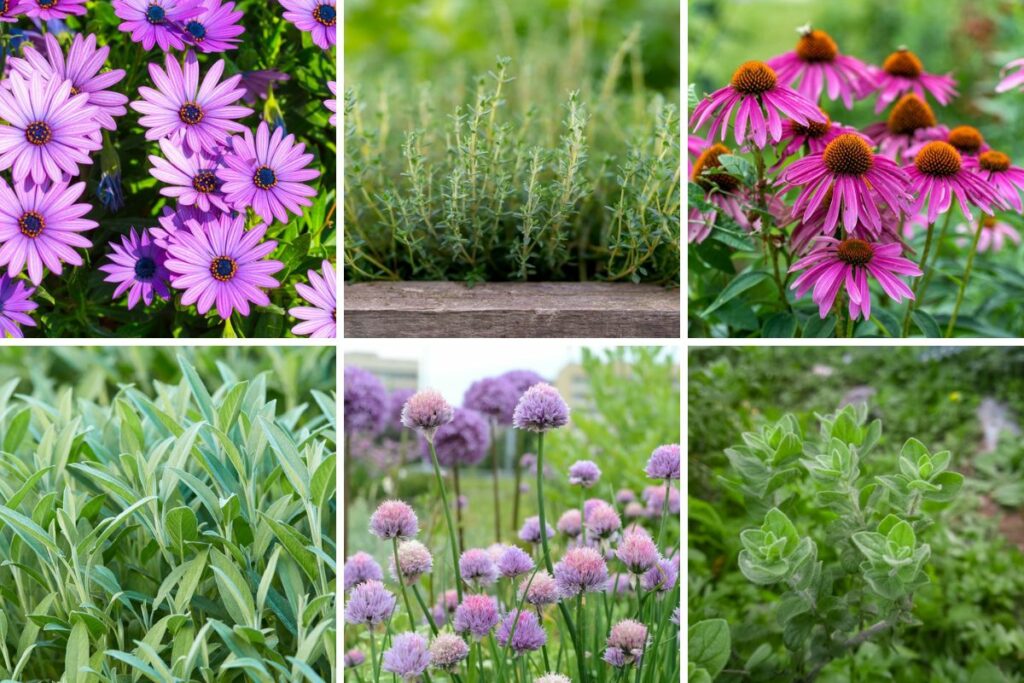
Used for centuries as a perfume, aromatherapy, flavoring, and more, lavender is one of the most beloved plants across the world. Technically a perennial flowering herb, lavender, also known by its botanical name lavendula, is a common flower seen in gardens, homes, and beauty products from early spring through mid-summer.
Lavender is a relatively low-maintenance plant that loves exposure to the sun. This is why in most places, lavender is unable to grow in the Fall and Winter seasons. Lavender can bloom for anywhere from 6 to 12 weeks depending on its region and can become around 20 to 24 inches tall when fully grown.
To learn more about how to grow and care for lavender, continue reading below.
| Botanical Name: | Lavender (lavendula) |
| Common Name(s): | Lavender |
| Plant Type: | Lamiaceae aromatic foliage; perennial flowering herb |
| Mature Size: | 20 to 24 inches tall |
| Sun Exposure: | Full sun for at least six or more total hours |
| Water Needs: | Drought tolerant; occasional watering needed |
| Soil Type: | Well-draining neutral to alkaline soil |
| Soil pH: | Around 7.0 pH |
| Bloom Time: | Spring and Summer |
| Maintenance: | Low maintenance once established |
| Flower Color: | Purple, pale purple, violet |
| Hardiness Zones: | 5-9 (USDA) |
| Toxicity: | Can cause an adverse reaction in babies, pets, and small children if ingested |
Lavender Care
When it comes to caring for lavender, always plant your outdoor lavender bushes in the sun. The soil should be well-draining, and if it is not, you should place plants into raised beds in a sunny part of the yard.
You can add organic matter such as organic fertilizers to increase the speed of growth, especially if planting in naturally heavy soil. This will help the water to drain on the rare occasion that you water your lavender.
Along with occasional watering, lavender plants should be pruned once per year right after blooming. This will prevent the drastic fall of dried lavender petals and help avoid a big composting mess at the end of the season.

Light
Lavender thrives in high light. This can mean either direct full sunlight for outdoor lavender and either window placement with bright outdoor light coming inside for planted indoor lavender or purchasing a sun lamp under which to keep it inside.
If you cannot guarantee a large patch of sunlight to grow a big lavender bush, consider planting a small amount of lavender. It will likely become healthier and grow taller than a large area covered in lavender that does not receive much sunlight.
Water
Lavender should be watered only once or twice per week. You must do this until the lavender plants are established, have thick roots, and are acclimated to their surroundings.
Once the lavender is comfortable and growing, the mature lavender plants can be watered every 2 to 4 weeks until it is time for harvest. If watering lavender in a colder area or attempting to grow through the winter, the lavender must be covered with extra winterizing materials and methods so that the water does not freeze and kill the plants.
Temperature and Humidity
The best temperature for lavender to grow in is anywhere from 60 to 65 degrees Fahrenheit day temperatures and 45 degrees to 50 degrees Fahrenheit night temperatures. This makes lavender is the perfect plant to grow in a generally mild climate such as the Pacific Northwest, where the summers are typically cool and the nights become somewhat mild.
When it comes to humidity, most lavender types cannot tolerate highly wet air. It is best to keep your lavender in a covered area that keeps out humidity if living somewhere with particularly moist warmer seasons.
Soil
Low to moderately low-fertile soil is the most effective soil type in which to plant lavender. While lavender does like composted and fertilized soil after it has acclimated when first planting lavender, it is best to avoid altering the existing soil with organic compound substances since it does best in naturally alkaline soil pH levels.
Fertilizer
Fertilizing your lavender can make it grow taller, stronger, and even smell more fragrant. To maintain a potent lavender plant, consider using a low-nitrogen fertilizer. These fertilizer types are to encourage blooming without altering the root consistency. You can also use all-purpose 7-9-5 or 15-15-15 fertilizer, but make sure to do so only during the mid to late summer months.
Is Lavender Toxic?
While lavender in all of its forms is usually not toxic to most people, it can cause adverse reactions on the skin if used as a cream or ingested for those who have extreme pollen or lavender allergies. If ingested, it can also become toxic to babies, animals, and small children, especially in large quantities.
Lavender in beauty products such as shampoos or face wash is often mild and does not cause harmful reactions for most.

Potting and Repotting Lavender
If your favorite way to grow lavender is in a pot rather than plantain g it directly into the soil or raised bed on your property, knowing how to repot it can be very beneficial. To pot or repot your existing lavender plant, follow the steps below:
- Wait to re-pot until late Winter or early Spring.
- Gently turn your lavender pot sideways and slip the lavender out with its roots.
- Clean out the soil from the pot.
- Add a slow-release fertilizer to your new pot.
- Place the lavender in a divet in the soil.
- Give it a thorough single watering.
- Leave it in a sunny corner for the rest of the season.
Propagating Lavender Bushes

Propagating lavender bushes is done very similarly to the lavender re-potting process. To do so, take the simple steps below:
- Cut a small branch of lavender off from just above the plant root.
- Remove leaves up the stem about halfway.
- Place the lavender in a small pot of soil with a few other clippings.
- Place in a sunny spot until they begin to grow.
- Then, remove the plant with soil and roots by tipping sideways.
- Plant the lavender in the ground in an area with full sun.
- Water sparingly until the lavender acclimates its roots and the blooms begin to form.






